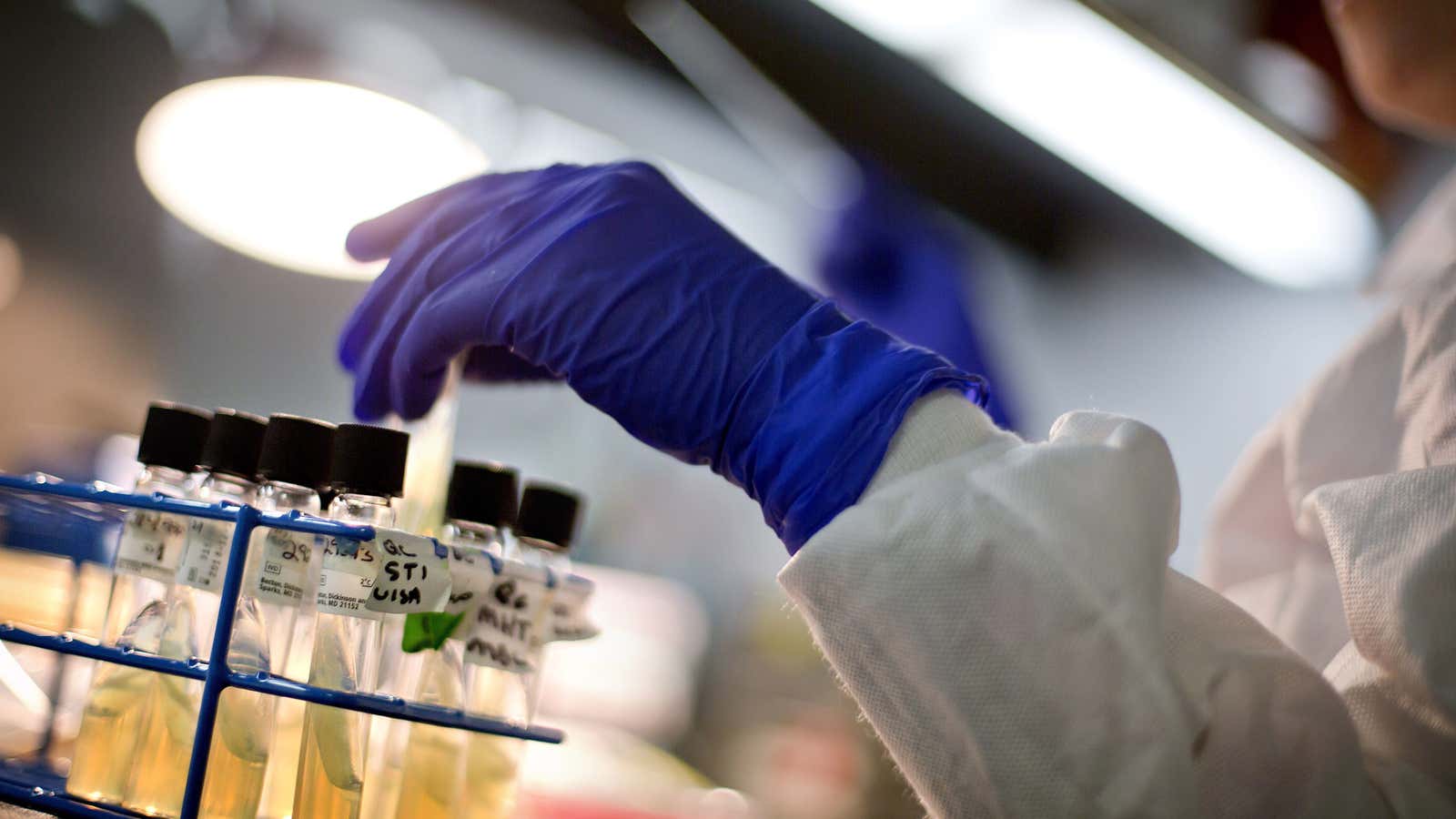On Wednesday, Nature published a study of the use of the genetic-editing technique called Crispr to correct a genetic mutation in human embryos, research that has drawn widespread notice. Somewhat less noticed, another journal in the Nature family announced that a Chinese research paper that claimed an advance in a heralded gene-editing alternative to Crispr has been withdrawn.
In a note August 2, Nature Biotechnology said the retraction “illustrates the importance of post-publication peer review in the age of 24/7 media”:
Although the paper was initially greeted with enthusiasm from researchers and intense media interest, speculation as to its reproducibility quickly grew, fueled by Twitter, blogs and other social media. Last November, this journal issued an Editorial Expression of Concern to alert the community to these reproducibility questions. Final resolution of the controversy necessitated the generation of additional experimental data from several groups over many months. That a retraction is now issued is testament to the considerable time, effort and funds invested by many laboratories around the globe… It is hard to overstate the impact of the Han paper following its publication last year, especially in China, where the paper originated. Coverage in the Chinese media was extensive, with headlines heralding the discovery of an entirely new gene editing system.
Last May, researchers from a Chinese university claimed to have developed a gene-editing technique, known for short as “NgAgo.” The same month, the study was published in the journal Nature Biotechnology, part of the Springer Nature scientific publishing group.
Gene-editing is a technique seen as holding enormous promise for human health in the future, including for diseases that have long been intractable to a cure, like cancer. In the just-published study with Crispr and the embryos, the technique “snipped” damaged genes, and set the body on the path to repair.
China has been pretty aggressive (paywall) in gene-editing research in recent years. However, three studies in China that used Crispr in human embryos produced poor results. In a 2015 study, for instance, Chinese researchers used Crispr in non-viable embryos to target genes responsible for an inherited blood disorder but were only able to replace the defective gene in about a third of embryos. The effort also resulted in other unintended changes of the genome.
The May 2016 study appeared to have found a different technique than Crispr, one that could possibly work alongside or “supersede” it, as Nature Biotechnology describes the research’s reception.
Disputes around the Chinese study arose soon after its publication by scientists at Hebei University of Science and Technology in northern China. Other scientists couldn’t duplicate the results and it became a topic of talk at conferences, and on blogs and social media. Nature Biotechnology began an investigation last August.
Han Chunyu, the corresponding scientist on the paper, said in October that the inability to replicate the study could be the result of “contaminated cells” (link in Chinese) in the duplication research. He also said he had successfully repeated the results at least four times.
Nature Biotechnology published its note of editorial concern after attempts by three independent groups to reproduce the results failed.
On Wednesday, the Hebei team said it was retracting the paper due to “the continued inability of the research community to replicate the key results.” Han and his team are now going to contract a third-party lab to try to “demonstrate the effectiveness” of the results, according to (link in Chinese) a notice from Hebei University on Thursday (August 3). Han didn’t immediately respond to a request for comment from Quartz.
Nature Biotechnology lauded the work of the scientists whose work, away from the limelight, led to the retraction.
“When it comes to biology, answers are often not definitive… In the case of NgAgo, the time has come and the data have spoken,” the journal said. “Publication of the NgAgo paper was not the end of the scientific process, it was the start.”
